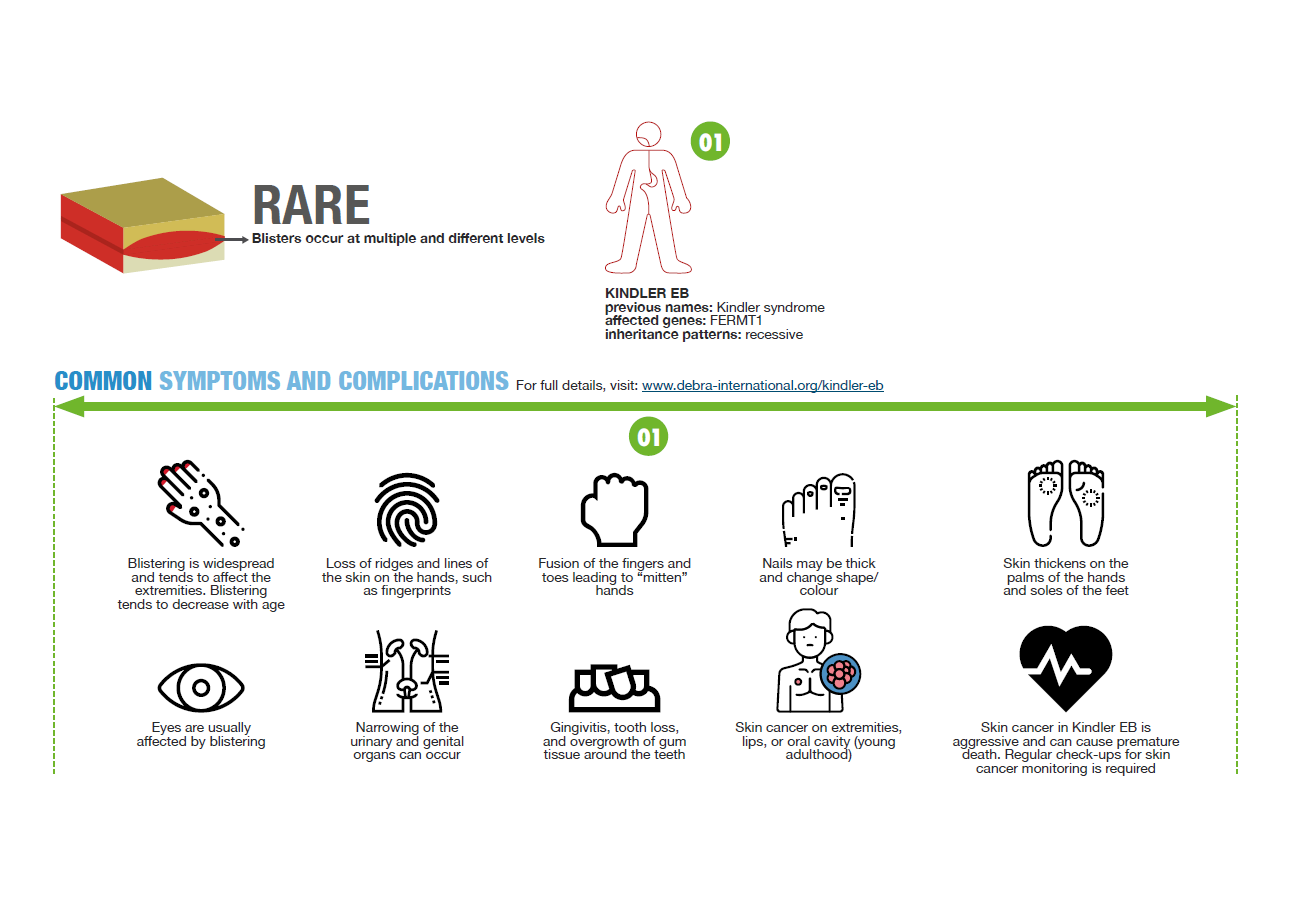Register with us
All our support services are free, confidential, and tailored to your individual needs. Just complete our simple registration process.
Kindler EB (KEB), previously known as Kindler Syndrome, is a rare form of EB. Blistering can occur in all layers of the skin or internal organs but tends to affect the extremities.

Every person has two copies of each gene, the gene mutation that causes EB can be in one or both genes in a pair. However, Kindler EB is inherited recessively meaning that both genes in a pair – one from each parent – is affected.
Recessive EB is usually more severe than dominant types and can come as a complete shock as the parents can be carriers without displaying symptoms themselves. The chances of a child inheriting Kindler EB is 25%.

There is currently no cure for EB, our work aims to change this. However, there are treatments available which help with the management of pain and itch.
We fund research projects aiming to find additional treatments as well as a cure, and our EB Support Team are committed to help people and carers deal with the challenges that EB brings.
All our support services are free, confidential, and tailored to your individual needs. Just complete our simple registration process.
